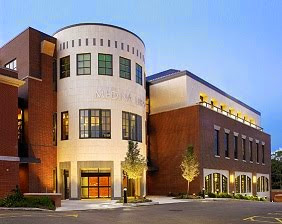With that in mind, I want to share what about genealogy I am grateful for:
1. First, foremost, ever most important - my Family! As a new wife almost 40 years ago, sorting out my living family was what peaked my interest in genealogy. Both my parents were products of blended families and had step siblings and half siblings galore. Then, our parents instilled in us the habit of calling any of their relatives from their generation as "Aunt" and "Uncle" as a sign of respect. Sorting out the cousins from all the blended siblings was my first task.
Also, my family continues to support my obsession in many ways. They've traveled with me to cemeteries and ancestral lands. They have proof read the family histories. They help me scan and capture old photos. They listen to my frustration when the research isn't going well. They have helped me break through some brick walls. But most importantly, they continue to share the family stories with me. Ones that I have forgotten or happened after I left home.
THANK YOU TO MY FAMILY!
 2. FamilySearch.org - In 1938 the Genealogical Society of Utah began to microfilm records which contained genealogical data from around the world. Most of that microfilm is now digitized and being indexed. This makes it possible to sit at my desk in Medina and search vital rcords in Sicily. THAT is cool! Just last week I used their site to track down probate records that proved the parentage of a man born in 1819 in Perry County, Ohio. It is my preferred search site.
2. FamilySearch.org - In 1938 the Genealogical Society of Utah began to microfilm records which contained genealogical data from around the world. Most of that microfilm is now digitized and being indexed. This makes it possible to sit at my desk in Medina and search vital rcords in Sicily. THAT is cool! Just last week I used their site to track down probate records that proved the parentage of a man born in 1819 in Perry County, Ohio. It is my preferred search site.THANK YOU TO FAMILYSEARCH.ORG!
3.FindaGrave.com - this site relies on volunteers who photograph the tombstones and detail the graves in cemeteries around the world. If I want a quick way to track down a death date for someone, I go here first. It isn't perfect or complete. The death usually had to happen within the last 150 years for the tombstones to be readable. Not every cemetery has been canvased and even within a cemetery, not every tombstone has been photographed. Volunteers can add obituary and family information. CAUTION: This would not be considered primary source information. Verify what you find in other documents. Sometimes, the volunteers are not willing to change information they have uploaded, even when it is proved to be wrong.
THANK YOU TO FINDAGRAVE.COM!
 4. Ancestry Library Edition (ALE) - This the library edition of the popular commercial database, Ancestry.com It gives me access to the best parts of the subscription database without having to pay the monthly fees. I just have to access it at the library, which is one of my favorite places to be anyway! I prefer using ALE to access census records and directories. I will look at the family trees that have been uploaded, but I have found so many errors in them that I analyze them carefully. I only use what information can be verified in other records.
4. Ancestry Library Edition (ALE) - This the library edition of the popular commercial database, Ancestry.com It gives me access to the best parts of the subscription database without having to pay the monthly fees. I just have to access it at the library, which is one of my favorite places to be anyway! I prefer using ALE to access census records and directories. I will look at the family trees that have been uploaded, but I have found so many errors in them that I analyze them carefully. I only use what information can be verified in other records.THANK YOU TO ANCESTRY LIBRARY EDITION!
5. Connecting to distant cousins.. Between online sharing, Facebook and old-fashioned letter writing for genealogy research, I have connected to cousins as far away as England and as near as 10 miles down the road. I have not yet met the British cousins, or the Tennessee, Texas or Alabama cousins, but I just ran into the Medina cousin again at the Candlelight Walk this weekend. We knew each other through another group we both belong to for two years before we discovered we are indeed, cousins. Fifth cousins once removed to be exact. Hello Sharon!
THANK YOU TO ALL MY COUSINS OUT THERE!
TO THE ONES I HAVE FOUND AND THE ONES I HAVE YET TO DISCOVER!
 6. Newspaper research. I love the little life details you can find in newspapers. Did you know that my 3X great grandfather was considered quite the storyteller in his local GAR group (Civil War veterans' organization)? I found that out in a newspaper article! My Uncle Jack regularly appeared in the local paper due to his top bowling scores. Another newspaper article! I covered the best online newspaper resources in a previous post: Newspaper articles
6. Newspaper research. I love the little life details you can find in newspapers. Did you know that my 3X great grandfather was considered quite the storyteller in his local GAR group (Civil War veterans' organization)? I found that out in a newspaper article! My Uncle Jack regularly appeared in the local paper due to his top bowling scores. Another newspaper article! I covered the best online newspaper resources in a previous post: Newspaper articles So, this busy Thanksgiving Day when you are counting all of your life blessings, include some of your genealogical gold nuggets!
HAPPY THANKSGIVING!
 |
| GOBBLE! GOBBLE! |





















